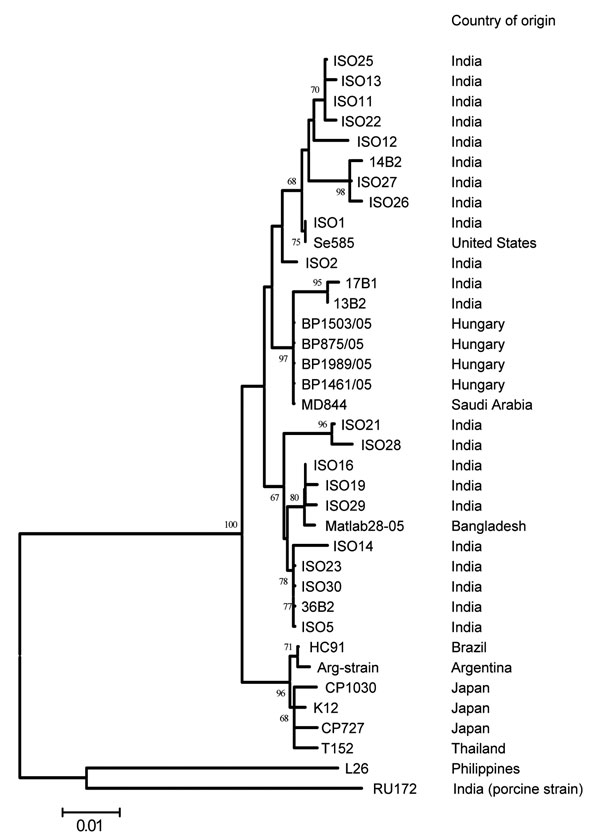Volume 13, Number 6—June 2007
Dispatch
Emergence of Serotype G12 Rotaviruses, Hungary
Figure 2

Figure 2. Phylogenetic relationship among Hungarian and other G12 rotaviruses. The tree was generated by the neighbor-joining algorithm by using a 501-nt fragment of VP7 (nt 79–579). Scale bar represents the nucleotide distance. Bootstrap values >60% are shown in the branch nodes. The country of origin is shown parallel to the strain names. ARG strain is an unnamed G12 isolate from Argentina.
Page created: June 30, 2010
Page updated: June 30, 2010
Page reviewed: June 30, 2010
The conclusions, findings, and opinions expressed by authors contributing to this journal do not necessarily reflect the official position of the U.S. Department of Health and Human Services, the Public Health Service, the Centers for Disease Control and Prevention, or the authors' affiliated institutions. Use of trade names is for identification only and does not imply endorsement by any of the groups named above.